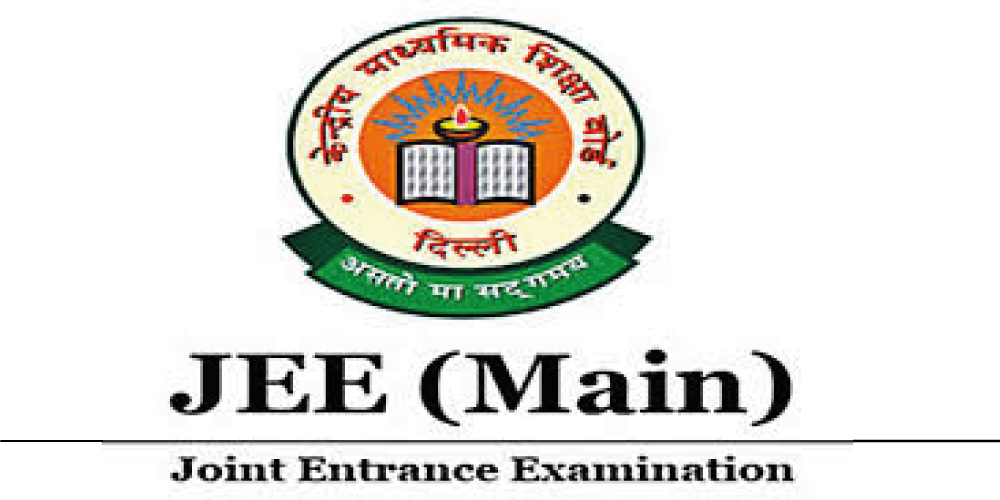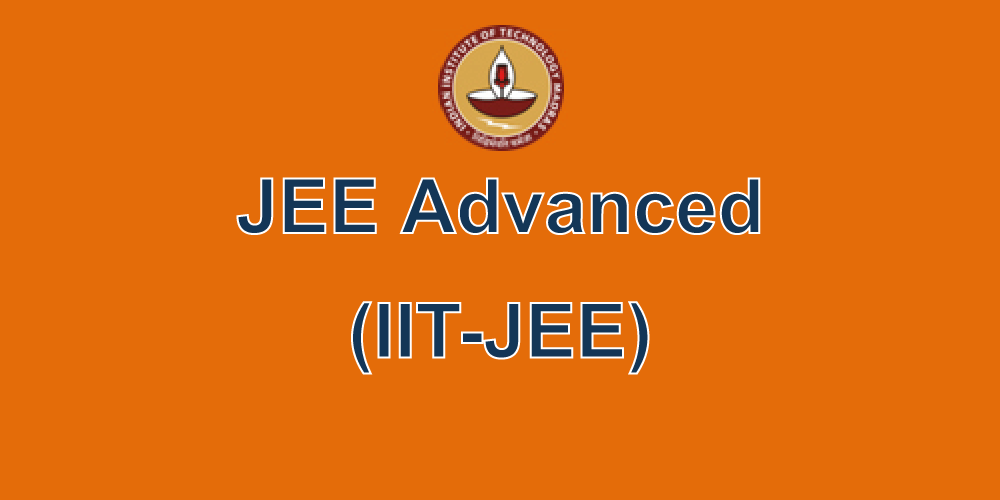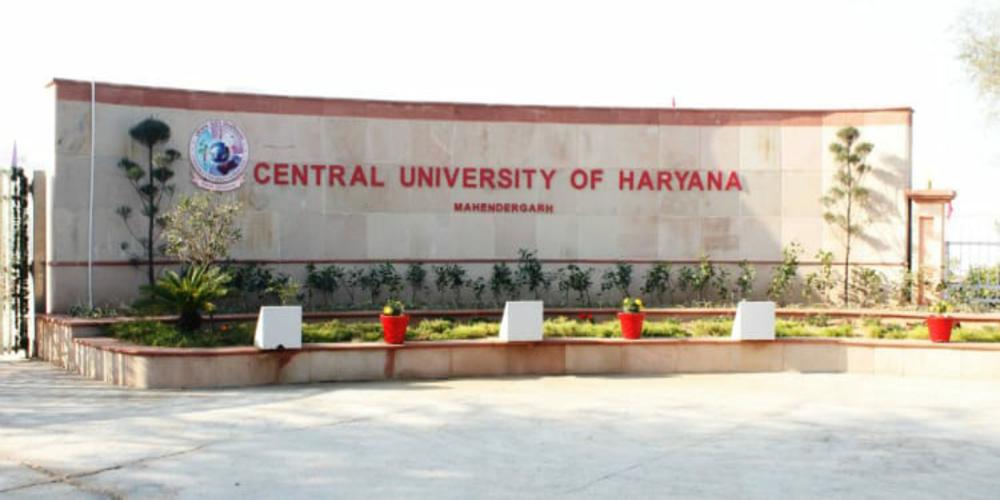
JEE mains

1.JEE Mains
National Testing Agency (NTA) has been established as an independent autonomous and self-sustained premier testing organization under Society Registration Act 1860 by Ministry of Human Resource Development (MHRD), Government of India (GoI). The NTA was formed for conducting efficient, transparent and international standard tests in order to assess the competency of candidates for admissions to premier higher education institutions.
In 2012, the Central Board of Secondary Education (CBSE) which conducted the AIEEE, announced the JEE that replaced the AIEEE and IIT-JEE. The JEE-Main is for admission to the National Institutes of Technology (NITs), Indian Institutes of Information Technology (IIITs), and some other colleges designated as “centrally funded technical institutes” (CFTIs). In September 2013, the IIT Council approved the decision of the Joint Admission Board (JAB) to continue with the two-phase JEE pattern (“Main” followed by “Advanced”) for IITs in 2014. The JEE-Advanced, which replaces IIT-JEE, is for admission to the Indian Institutes of Technology (IITs). Only the students selected in JEE Main are eligible for appearing in JEE Advanced.
Joint Seat Allocation Authority (JoSAA) conducted the joint admission process for a total of 23 IITs, ISM, 32 NITs, 18 IIITs and 19 other Government Funded Technical Institutes (GFTIs)
2.Mode of Examination:
JEE Main has two papers, Paper-1 and Paper-2. Candidates may opt for either or both of them. Both papers contain multiple choice questions (MCQ). From January 2020 an additional Paper – 3 is being introduced for B.Planning courses separately. However there are different modes for different papers.
- B.E. /B. Tech. in “Computer Based Test (CBT)” mode only.
- B.Arch: Mathematics- Part I and Aptitude Test-Part II in “Computer Based Test (CBT)” mode only and Drawing Test –Part III in “Pen & Paper Based” (offline) mode to be attempted on drawing sheet of A4 size.
- Planning: Mathematics- Part I , Aptitude Test-Part II and Planning Based Questions-Part III in “Computer Based Test (CBT)” mode only.
3.Choice of Medium for Question Paper:
The medium of Question Paper shall be in English, Hindi and Gujarati. The option of question paper language should be exercised while filling up the Application Form and it cannot be changed at a later stage.
- Please note that for correctness of the questions in all the question papers, the English version will be taken as final.
Details of Examination Paper wise
Subject combinations for each paper, type of questions in each paper and mode of examination is given in the table below:
| PAPER | SUBJECTS | TYPE OF QUESTIONS | MODE OF EXAMINATION |
| B.E./B.Tech. | Mathematics, Physics & Chemistry | Objective Type – Multiple Choice Questions (MCQs) & Questions for which answer is a numerical value, with equal weightage to Mathematics, Physics & Chemistry | “Computer Based Test (CBT)” mode only |
| B. Arch | Mathematics – Part I | Objective Type – Multiple Choice Questions (MCQs)& Questions for which answer is a numerical value | “Computer Based Test (CBT)” mode only |
| Aptitude Test – Part II | Objective Type – Multiple Choice Questions (MCQs) | ||
| Drawing Test – Part III | Questions to test drawing aptitude | “Pen & Paper Based” (offline) mode to be attempted on Drawing sheet | |
| B. Planning | Mathematics – Part I | Objective Type – Multiple Choice Questions (MCQs)& Questions for which answer is a numerical value | “Computer Based Test (CBT)” mode only |
| Aptitude Test – Part II | Objective Type – Multiple Choice Questions (MCQs) | ||
| Planning Based Questions – PartIII | Objective Type – Multiple Choice Questions (MCQs) |
4.Subjects & Syllabus for JEE Mains:
1.Mathematics- Maths syllabus for JEE Mains include topics like Algebra, Geometry, Differential Calculus, Trigonometry, Statistical & Mathematical Reasoning.
2.Physics –. JEE Main syllabus for Physics comprises topics like Kinematics, Optics, Laws Of Motion, Rotational Motion, Gravitation, Properties Of Solids And Liquids etc. Last year, the highest weightage in Physics was given to topics like current electricity, alternating current, Rotational dynamics, Modern Physics etc. The JEE Main Physics syllabus includes two sections A and B. Section A includes Theory part with 80% weightage and section B contains practical component (experimental skills) with 20% weightage.
3.Chemistry – JEE Main syllabus for Chemistry includes various concepts of Organic chemistry, Inorganic Chemistry & Physical Chemistry.
5.Eligibility
For appearing in the JEE (Main) examination there is no age limit for the candidates. The candidates who have passed class 12th equivalent examination in 2018, 2019 or appearing in 2020 irrespective of their age can appear in JEE (Main) examination – 2020. The candidates should also satisfy themselves about their fulfilling the age limit requirements of the Institutes in which they are desirous of taking admission. The candidates must note that the IITs have an age limit / restriction, which will be published in JEE (Advanced)-2020 Information Brochure
5.1 List of Qualifying Examinations (QE)
i. The final examination of the 10+2 system, conducted by any recognized Central/ State Board, such as Central Board of Secondary Education, New Delhi; Council for the Indian School Certificate Examinations, New Delhi; etc.
ii. Intermediate or two-year Pre-University examination conducted by a recognized Board/ University.
iii.Final examination of the two-year course of the Joint Services Wing of the National Defence Academy.
iv.Senior Secondary School Examination conducted by the National Institute of Open Schooling with a minimum of five subjects.
v.Any Public School/ Board/ University examination in India or in any foreign country recognized as equivalent to the 10+2 system by the Association of Indian Universities (AIU).
vi. Higher Secondary Certificate Vocational Examination.
vii. A Diploma recognized by AICTE or a State board of technical education of at least 3 year duration.
viii.General Certificate Education (GCE) examination (London/Cambridge/Sri Lanka) at the Advanced (A) level.
ix. High School Certificate Examination of the Cambridge University or International Baccalaureate Diploma of the International Baccalaureate Office, Geneva.
Candidates who passed Class 12th/Qualifying examination in 2017 or before as well as those who will appear in such examination in 2021 or later are not eligible to appear in JEE (Main)–2020.
Candidates must note that the IITs permit only two attempts for the JEE (Advanced), i.e. a candidate should have appeared for the Class XII (or equivalent) examination for the first time
6.Examination pattern
JEE Main Online Test is a Computer Based Exam which is conducted using the internet (LAN) to make it safe, secure and uninterrupted. In JEE Main Computer Based Examination, the questions appear on the computer screen along with the options. There will be four or more options for each question. The candidate has to click one of the options using a computer mouse which can be reviewed or re-answered any time during the duration of the examination. The online examination option is available for only Paper-1 (B.E./B.Tech) of JEE Main 2020.
| 1. | Dates of Examination | Between 1st Week of April 2020 to 2nd week of April | |||||||||
| 2. | Allocation of Date and shift | Random | |||||||||
| 3. | Medium of Question Paper | Candidates have to opt language of QP in the Online Application Form. | |||||||||
| English & Hindi | All Centre Cities | ||||||||||
| English, Hindi andGujarati. | Centre Cities in Gujarat, Daman & Diu andDadra & Nagar Haveli | ||||||||||
| (a) B.E./B. Tech.“Computer Based Test (CBT)” mode only to be attempted on Computer. Syllabus available on NTA’sWebsite. | |||||||||||
| 4. | Subject wise distribution of Questions, Total Number of Questions and Marks | Subject | No of Questions | Marks | |||||||
| Mathematics | (20+5*) | 100 | |||||||||
| Physics | (20+5*) | 100 | |||||||||
| Chemistry | (20+5*) | 100 | |||||||||
| Total | 75 | 300 | |||||||||
| *20 questions will be MCQs and 5 questions will have answer to be filled in as numerical value. | |||||||||||
| 5. | Marking Scheme for MCQs | Correct Answer or the best Answer | Four mark (+4) | ||||||||
| Incorrect Answer | Minus one mark (-1) | ||||||||||
| Unanswered / Marked for Review | No mark (0) | ||||||||||
| 6. | Marking Scheme for questions for which answer is a Numerical value | Correct Answer | Four mark (+4) | ||||||||
| Incorrect Answer | No mark (0) | ||||||||||
| Unanswered / Marked for Review | No mark (0) | ||||||||||
| 7. | Method of determining merit | Conversion of raw score in Mathematics, Physics, Chemistry and Total into NTA scores.Overall merit shall be prepared by merging NTA scores of all
shifts of all days. |
|||||||||
| 8. | Method of resolving ties | Tie between candidates obtaining equal Total NTA scores in B.E./B.Tech, will be resolved in the following manner:§ NTA score in Mathematics, followed by
§ NTA score in Physics, followed by § NTA score in Chemistry, followed by § Candidates with less proportion of negative responses, followed by § Candidates older in Age |
|||||||||
| (b) B. Arch: Mathematics- Part I and Aptitude Test-Part II in “Computer Based Test (CBT)” mode only and Drawing Test –Part III in “Pen & Paper Based” (offline) mode to be attempted on drawing sheet of A4 size. | |||||||||||
| 9. | Subject wise distribution of Questions, Total Number of Questions and Marks | Subject | No of Questions | Marks | |||||||
| Mathematics-Part I | (20+5*) | 100 | |||||||||
| Aptitude Test-Part II | 50 | 200 | |||||||||
| Drawing Test –Part III | 02 | 100 | |||||||||
| Total | 77 | 400 | |||||||||
| *20 questions will be MCQs and 5 questions will have answer to be filled as numerical value. | |||||||||||
| 10. | (a) Marking Scheme for MCQs | Correct Answer or the best Answer | Four mark (+4) | ||||||||
| Incorrect Answer | Minus one mark (-1) | ||||||||||
| Unanswered /Marked for Review | No mark (0) | ||||||||||
| (b) Marking Scheme forquestions for which answer is a Numerical value | Correct Answer | Four mark (+4) | |||||||||
| Incorrect Answer | No mark (0) | ||||||||||
| Unanswered / Marked for Review | No mark (0) | ||||||||||
| (c) Marking Scheme forDrawing Test –Part III | Two questions to be evaluated out of 100 marks. | ||||||||||
| 11. | Method of determining merit | Conversion of raw score in Mathematics, Aptitude Test, Drawing Test and Total into NTA Scores.Overall merit shall be prepared by merging NTA Scores of all shifts of all days. | |||||||||
| 12. | Method of resolving ties | Tie between candidates obtaining equal Total NTA scores in B.Archwill be resolved in the following manner: | |||||||||
| § NTA score in Mathematics, followed by§ NTA score in Aptitude Test, followed by
§ NTA score in Drawing Test, followed by § Candidates with less proportion of negative responses, followed by § Candidates older in age |
|||||||||||
| (c) B. Planning :Mathematics- Part I , Aptitude Test-Part II and Planning Based Questions Part III in “Computer Based Test (CBT)” mode only | |||||||||||
| 13. | Subject wise distribution of Questions, Total Number of Questions and Marks | Subject | No of questions | Marks | |||||||
| Mathematics-Part I | (20+5*) | 100 | |||||||||
| Aptitude Test-Part II | 50 | 200 | |||||||||
| Planning Based Objective TypeMCQs –Part III | 25 | 100 | |||||||||
| Total | 100 | 400 | |||||||||
| *20 questions will be MCQs and 5 questions will have answer to be filled in as numerical value. | |||||||||||
| 14. | Marking Scheme for MCQs | Correct Answer or the best Answer | Four mark (+4) | ||||||||
| Incorrect Answer/Multiple Answer | Minus one mark (-1) | ||||||||||
| Unanswered /Marked for Review | No mark (0) | ||||||||||
| 15. | Marking Scheme for questions for which answer is a Numerical value | Correct Answer | Four mark (+4) | ||||||||
| Incorrect Answer | No mark (0) | ||||||||||
| Unanswered / Marked for Review | No mark (0) | ||||||||||
| 16. | Method of determining merit | Conversion of raw score in Mathematics, Aptitude Test, Planning Based Test and Total into NTA Scores.Overall merit shall be prepared by merging NTA Scores of all shifts of all days. | |||||||||
| 17. | Method of resolving ties | Tie between candidates obtaining equal Total NTA scores in B. Planning will be resolved in the following manner:§ NTA score in Mathematics, followed by
§ NTA score in Aptitude Test, followed by § NTA score in Planning Based Questions, followed by § Candidates with less proportion of negative responses, followed by § Candidates older in age |
|||||||||
Earlier, counseling for JEE main was conducted through CSAB but now officials have made changes in the counseling procedure. The JAB (Joint Admission Board), representing IITs and CSAB (Central Seat Allocation Board), are making agreements on the behalf of NITs and other CFTIs, and are now united to conduct a counseling (common counseling) for the two exams of JEE. The memo for the same was signed on May 2, 2015. These two together will be known as the Joint Seat Allocation Authority (JoSAA). No Changes in JEE Main 2017 except that Board Marks will not be considered for normalization and A.I.R will strictly be based on JEE Scores. As per the official changes made in Eligibility Criteria of JEE Advanced, 12th Marks will not matter for appearing in the exam.



